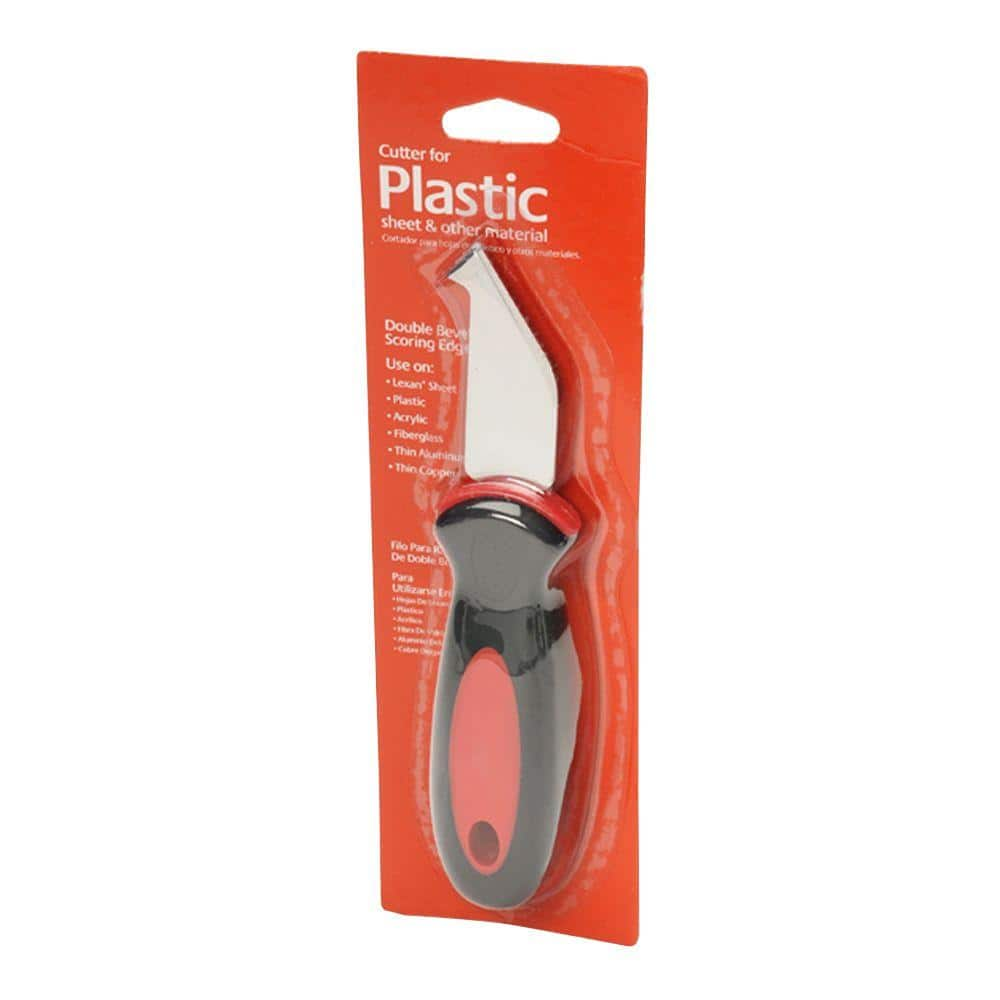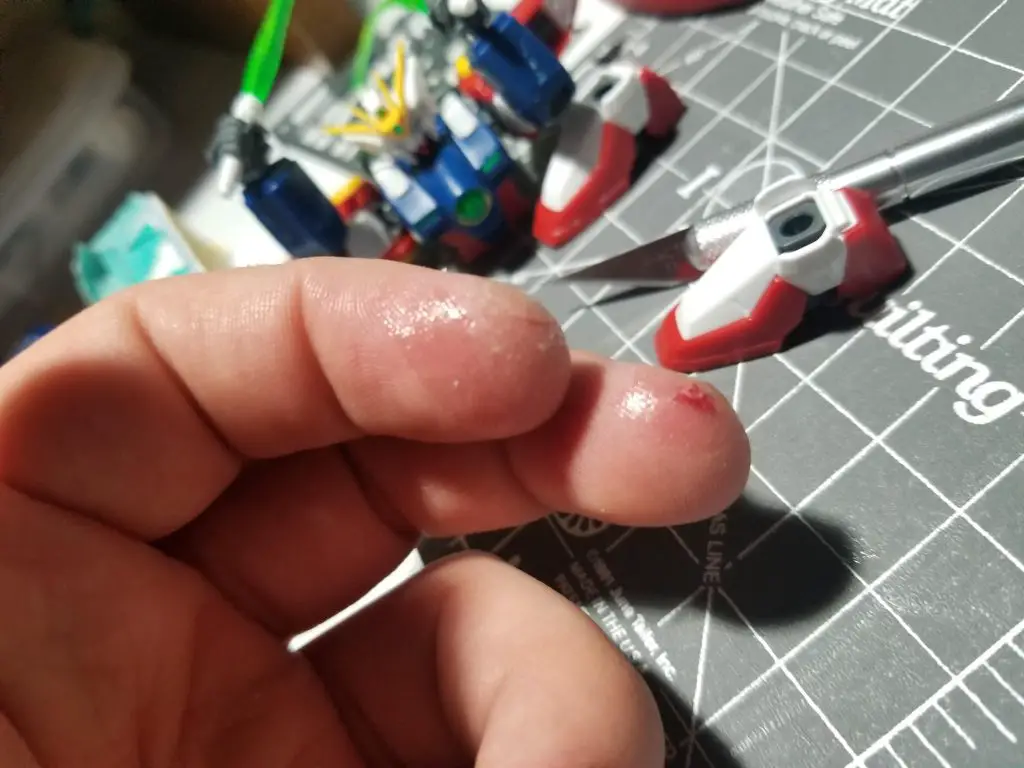Can An Exacto Knife Cut Plastic? An Exacto knife is a versatile tool used for cutting and trimming a variety of materials. It’s popular for its precision and accuracy, making it a great choice for projects that require intricate cuts. But can an Exacto knife cut plastic? The answer is yes, but with a few caveats. Plastic can be a tricky material to cut, and depending on the type of plastic you’re working with, it may require a different type of blade or some extra care when slicing. In this article, we’ll discuss the best ways to cut plastic with an Exacto knife.
How to Cut Plastic With an Exacto Knife
Exacto knives are designed to cut through a variety of materials, including plastic. However, the type of plastic and the thickness of the material will determine how well the knife will work. thinner plastics, such as those used in food packaging, can be easily cut with an Exacto knife.
thicker plastics, such as those used in credit cards or ID badges, may require multiple passes with the knife to create a clean cut.
An Exacto knife is a type of craft knife that is often used for precision cutting and trimming. It can be very useful for cutting plastic, as long as the blade is sharp and the user has a steady hand. To use an Exacto knife on plastic, start by scoring the surface of the plastic with the blade.
Make sure to apply even pressure so that the cut is clean and straight. Once you have scored the plastic, slowly and carefully run the blade along the score line until you have cut through the entire piece. If done correctly, an Exacto knife can make clean, precise cuts in plastic.
Just be sure to use a sharp blade and exercise caution while cutting to avoid accidents.
Hot Exacto Knife for plastic model styrene cutting
How to Cut Hard Plastic Easily
Are you looking for an easy way to cut hard plastic? If so, then you have come to the right place. In this blog post, we will show you how to cut hard plastic easily using a few simple tools.
First, you will need a sharp utility knife. Second, you will need a straight edge to guide your cuts. Finally, you may want to wear gloves to protect your hands from the sharp edges of the plastic.
To start, score the plastic along your desired cutting line with the utility knife. Be sure to make shallow cuts so that you don’t accidentally cut through the entire piece of plastic. Once you have scored the plastic, bend it back and forth until it snaps along the scored line.
If your cuts are not clean or if they are jagged, then you can use a sanding block or file to smooth out the edges. And that’s it! Now you know how to cut hard plastic easily using just a few simple tools.
How to Cut Hard Plastic Without a Saw
If you need to cut hard plastic and don’t have a saw, there are a few different ways you can do it. First, you can use a sharp knife or box cutter. Just be careful not to cut yourself.
Second, you can use a pair of scissors. Third, you can use a utility knife. Fourth, you can use a jigsaw.
Finally, you can use a power drill with a metal bit.
How to Cut Plastic Smoothly
Most people don’t know how to cut plastic smoothly. It’s actually quite easy if you have the right tools. Here are the steps:
1. Start with a sharp knife. A dull knife will cause the plastic to warp and won’t give you a clean, straight edge.
2. Place the piece of plastic on a cutting board or another flat surface.
3. Use a ruler or other straight edge to guide your cuts. Make sure to press down firmly so that the blade doesn’t slip.
4. Cut slowly and evenly for the best results. If you’re having trouble getting started, try heating up the blade with a lighter for a few seconds (be careful not to melt the plastic!).
Cutting Plastic With Hot Knife
In order to cut plastic with a hot knife, you will need to purchase a hot knife cutter. These can be found at most hardware stores. Once you have your cutter, follow these steps:
1. Heat up the blade of the cutter by plugging it in and flipping the switch to “on.” The blade will get very hot, so be careful not to touch it.
2. Place the plastic sheet on a cutting surface. Use a ruler or straight edge to guide your cuts if necessary.
3. Slowly run the hot knife along the line where you want to cut the plastic. The heat from the blade will melt through the plastic, making it easy to cut through.
4. Let the plastic cool before handling it further. The edges of the cut may be sharp, so use caution when handling them.

Credit: www.homedepot.com
What Kind of Knife Will Cut Through Plastic?
When it comes to cutting through plastic, there are a few different types of knives that can do the job. The most common type of knife that is used for this purpose is a utility knife. Utility knives have sharp, serrated blades that can easily cut through thin pieces of plastic.
Another type of knife that can be used to cut through plastic is a paring knife. Paring knives have sharp, pointed blades that can make precision cuts in plastic. In addition, you can also use a hobby knife to cut through the plastic.
Hobby knives have very sharp blades and can easily make intricate cuts in plastic.
What is the Best Tool to Cut Hard Plastic?
When it comes to cutting hard plastic, there are a few different options available. One option is to use a power drill with a hole saw attachment. This will give you a clean, round cut through the material.
Another option is to use a jigsaw with a metal-cutting blade. This can also give you clean cuts but may take more time and effort than using a drill. If you need to make quick, rough cuts then using a utility knife or saw will work just fine.
Just be aware that these methods may create more of an unwanted mess than the other two options.
What Can I Use to Cut Hard Plastic?
Assuming you need to cut hard plastic for a project or repairs, here are some tips and tools that can be used. For best results, use a sharp blade designed specifically for cutting plastic. A utility knife can be used to cut thin sheets of hard plastic.
To make clean, straight cuts, use a metal ruler or T-bar clamp as a guide. For thicker pieces of hard plastic, score the surface first with the utility knife before making the final cut. This will help prevent cracking and chipping.
For larger pieces or shapes, a jigsaw fitted with a fine-toothed blade designed for cutting plastic can be used. Make sure to wear eye protection when using power tools like this. Start the cut at a slow speed and gradually increase the speed as needed.
If the piece is thick, it may need to be cooled in between cuts to prevent melting from friction heat build-up. Plastic pipes can also be cut with saws designed for cutting metal (e.g., a Hack saw). Again, start at a slow speed and increase as needed; if necessary, cool the pipe in between cuts so it doesn’t melt from friction heat build-up.
.
How Do You Cut Plastic With a Knife?
If you need to cut plastic with a knife, there are a few things you need to keep in mind. First, the type of plastic will affect how easy it is to cut. Softer plastics like cutting boards or food containers are easier to cut than harder plastics like credit cards.
Second, be sure to use a sharp knife for the best results. A dull blade will just crush and deform the plastic rather than slice through it cleanly. Third, use a cutting board or another surface that can withstand cuts from a knife without being damaged – you don’t want to ruin your countertop!
Finally, make sure to use gentle pressure when cutting so that you don’t slip and injure yourself. With these tips in mind, cutting through plastic should be a breeze!
Conclusion
Exacto knives are often used to cut plastic, but it is important to be aware of the limitations of this type of knife. Exacto knives are not designed to cut through thick plastic, and they can only make clean cuts in thin plastic. If you try to cut thicker plastic with an Exacto knife, the blade will likely snag and tear the material.
For best results, use an Exacto knife to score a line on the surface of the plastic before breaking it along that line.

I’m John Carry, also known as a woodworker I have been a professional saw expert for over 10 years. I’d work with every type of saw machine out there, and experiment to find which tools work better.
I’m always looking for ways to improve my skills and help those around me. I love my job and am always happy to share my knowledge with others.


